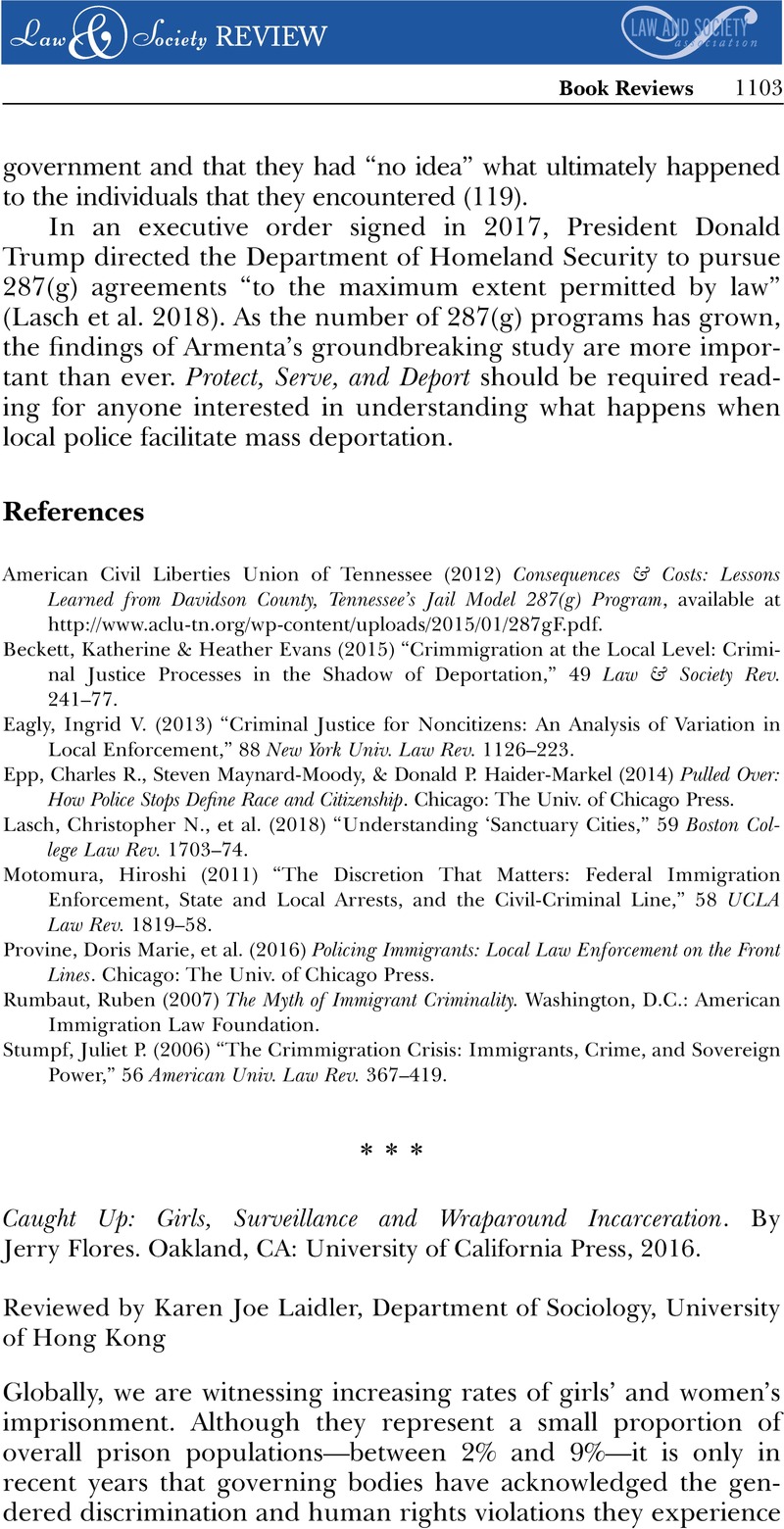No CrossRef data available.
Article contents
Caught Up: Girls, Surveillance and Wraparound Incarceration. By Jerry Flores. Oakland, CA: University of California Press, 2016.
Review products
Caught Up: Girls, Surveillance and Wraparound Incarceration. By Jerry Flores. Oakland, CA: University of California Press, 2016.
Published online by Cambridge University Press: 01 January 2024
Abstract
An abstract is not available for this content so a preview has been provided. Please use the Get access link above for information on how to access this content.

- Type
- Book Reviews
- Information
- Copyright
- © 2018 Law and Society Association.
References
Manjoo, R. (2013) “Pathways to, conditions and consequences of incarceration for women,” in Report by the Special Rapporteur on Violence Against Women, in Accordance with General Assembly Resolution A/65/187.Google Scholar
Sheahan, F. Penal Reform International, United Kingdom, United Nations Interagency Panel on Juvenile Justice (IPJJ), & Sweden (2014) Neglected Needs: Girls in the Criminal Justice System, London: Penal Reform International.Google Scholar


